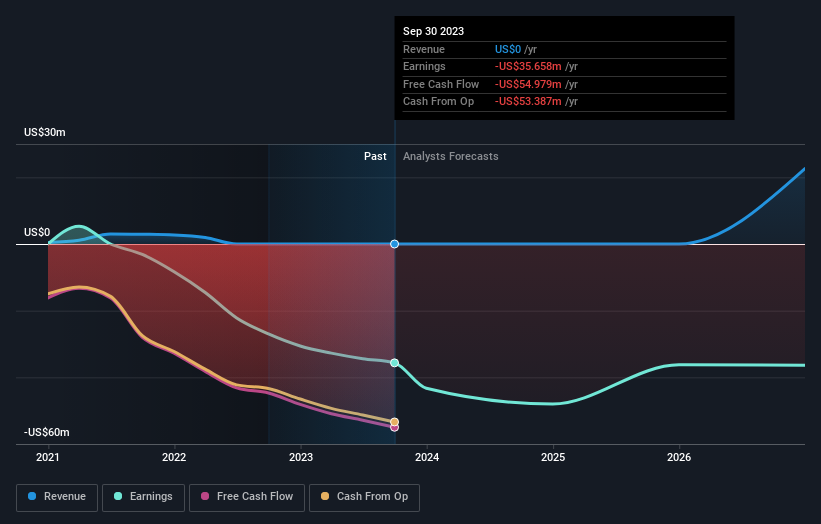Individual investors own 40% of Rani Therapeutics Holdings, Inc. (NASDAQ:RANI) shares but private companies control 47% of the company
Key Insights
Rani Therapeutics Holdings' significant private companies ownership suggests that the key decisions are influenced by shareholders from the larger public
51% of the business is held by the top 3 shareholders
Every investor in Rani Therapeutics Holdings, Inc. (NASDAQ:RANI) should be aware of the most powerful shareholder groups. We can see that private companies own the lion's share in the company with 47% ownership. Put another way, the group faces the maximum upside potential (or downside risk).
Meanwhile, individual investors make up 40% of the company’s shareholders.
Let's delve deeper into each type of owner of Rani Therapeutics Holdings, beginning with the chart below.
Check out our latest analysis for Rani Therapeutics Holdings
What Does The Institutional Ownership Tell Us About Rani Therapeutics Holdings?
Institutional investors commonly compare their own returns to the returns of a commonly followed index. So they generally do consider buying larger companies that are included in the relevant benchmark index.
We can see that Rani Therapeutics Holdings does have institutional investors; and they hold a good portion of the company's stock. This can indicate that the company has a certain degree of credibility in the investment community. However, it is best to be wary of relying on the supposed validation that comes with institutional investors. They too, get it wrong sometimes. If multiple institutions change their view on a stock at the same time, you could see the share price drop fast. It's therefore worth looking at Rani Therapeutics Holdings' earnings history below. Of course, the future is what really matters.
We note that hedge funds don't have a meaningful investment in Rani Therapeutics Holdings. Looking at our data, we can see that the largest shareholder is South Lake Management LLC with 47% of shares outstanding. For context, the second largest shareholder holds about 2.6% of the shares outstanding, followed by an ownership of 1.9% by the third-largest shareholder.
After doing some more digging, we found that the top 3 shareholders collectively control more than half of the company's shares, implying that they have considerable power to influence the company's decisions.
While it makes sense to study institutional ownership data for a company, it also makes sense to study analyst sentiments to know which way the wind is blowing. There are a reasonable number of analysts covering the stock, so it might be useful to find out their aggregate view on the future.
Insider Ownership Of Rani Therapeutics Holdings
The definition of an insider can differ slightly between different countries, but members of the board of directors always count. Management ultimately answers to the board. However, it is not uncommon for managers to be executive board members, especially if they are a founder or the CEO.
I generally consider insider ownership to be a good thing. However, on some occasions it makes it more difficult for other shareholders to hold the board accountable for decisions.
Shareholders would probably be interested to learn that insiders own shares in Rani Therapeutics Holdings, Inc.. It has a market capitalization of just US$179m, and insiders have US$3.0m worth of shares, in their own names. Some would say this shows alignment of interests between shareholders and the board, though we generally prefer to see bigger insider holdings. But it might be worth checking if those insiders have been selling.
General Public Ownership
The general public-- including retail investors -- own 40% stake in the company, and hence can't easily be ignored. While this group can't necessarily call the shots, it can certainly have a real influence on how the company is run.
Private Company Ownership
It seems that Private Companies own 47%, of the Rani Therapeutics Holdings stock. Private companies may be related parties. Sometimes insiders have an interest in a public company through a holding in a private company, rather than in their own capacity as an individual. While it's hard to draw any broad stroke conclusions, it is worth noting as an area for further research.
Next Steps:
It's always worth thinking about the different groups who own shares in a company. But to understand Rani Therapeutics Holdings better, we need to consider many other factors. To that end, you should learn about the 3 warning signs we've spotted with Rani Therapeutics Holdings (including 2 which are potentially serious) .
If you would prefer discover what analysts are predicting in terms of future growth, do not miss this free report on analyst forecasts.
NB: Figures in this article are calculated using data from the last twelve months, which refer to the 12-month period ending on the last date of the month the financial statement is dated. This may not be consistent with full year annual report figures.
Have feedback on this article? Concerned about the content? Get in touch with us directly. Alternatively, email editorial-team (at) simplywallst.com.
This article by Simply Wall St is general in nature. We provide commentary based on historical data and analyst forecasts only using an unbiased methodology and our articles are not intended to be financial advice. It does not constitute a recommendation to buy or sell any stock, and does not take account of your objectives, or your financial situation. We aim to bring you long-term focused analysis driven by fundamental data. Note that our analysis may not factor in the latest price-sensitive company announcements or qualitative material. Simply Wall St has no position in any stocks mentioned.


